- Home
- Lloyd Jones
A History of Silence
A History of Silence Read online
A HISTORY OF SILENCE
Praise for Mister Pip
‘As compelling as a fairytale—beautiful, shocking and profound.’ HELEN GARNER
‘A brilliant narrative performance.’ Listener
‘Mister Pip is a rare, original and truly beautiful novel. It reminds us that every act of reading and telling is a transformation, and that stories, even painful ones, may carry possibilities of redemption. An unforgettable novel, moving and deeply compelling.’ GAIL JONES
‘Poetic, heartbreaking, surprising…Storytelling, imagination, courage, beauty, memories and sudden violence are the main elements of this extraordinary book.’ ISABEL ALLENDE
‘It reads like the effortless soar and dip of a grand piece of music, thrilling singular voices, the darker, moving chorus, the blend of the light and shade, the thread of grief urgent in every beat and the occasional faint, lingering note of hope.’ Age
‘A small masterpiece…Lloyd Jones is one of the best writers in New Zealand today. With the beautiful spare, lyrical quality that characterises his writing, Jones makes us think about the power and the magic of storytelling, the possibilities—and the dangers—of escaping to the world within.’ Dominion Post
‘A little Gauguin, a bit of Lord Jim, the novel’s lyricism evokes great beauty and great pain.’ Kirkus Reviews
‘Rarely, though, can any novel have combined charm, horror and uplift in quite such superabundance.’ Independent
‘Lloyd Jones brings to life the transformative power of fiction… This is a beautiful book. It is tender, multi-layered and redemptive.’ Sunday Times
Praise for Hand Me Down World
‘This is a writer who knows how to tell a story, deftly, surprisingly, magnificently.’ Weekend Herald NZ
‘A masterful, prismatic piece of storytelling.’ Independent
‘An extraordinary novel…Jones is a daring writer who can be relied on to ignore expectation, and is becoming one of the most interesting, honest and thought-provoking novelists working today.’ Guardian
‘Delicate and beguiling. It spirits the reader into a world that is both fascinating and perplexing. Its charms are hard to resist; its questions are hard to avoid… a book of great mind and heart.’ Age
‘Jones’s touch is deft yet bold…a novel so fine, demanding and morally acute.’ Sydney Morning Herald
‘Jones slowly reveals the secrets of Ines’s story and its emotional momentum sweeps us up and makes us fellow travellers.’ Weekend Australian
‘A fine and moving story with enormous compassion, emotional depth and tender insight into humanity… a superbly written meditation on how the disenfranchised accept the world as it is handed to them, on the weakness of men, on the deeply moving kindness of strangers, and on the power of maternal love. It is a beautiful book.’ Sunday Mail
‘We surely have sufficient evidence to trumpet Lloyd Jones as one of the most significant novelists writing today.’ Sunday Times
‘As complex and as beautifully crafted as a fine patchwork quilt.’ South Taranaki Star
‘Haunting to the very final line.’ Daily Telegraph
Lloyd Jones was born in New Zealand in 1955. His best-known works include Mister Pip, winner of the Commonwealth Writers’ Prize and shortlisted for the Man Booker Prize, The Book of Fame, winner of numerous literary awards, Here at the End of the World We Learn to Dance, Biografi, Choo Woo, Paint Your Wife, The Man in the Shed, and Hand Me Down World. He lives in Wellington.
LLOYD
JONES
A HISTORY OF
SILENCE
A MEMOIR
Front cover: the author’s mother, Joyce, and her father, O.T. Evans. All family photos courtesy of the author.
Reading notes available at textpublishing.com.au/resources
textpublishing.com.au
The Text Publishing Company
Swann House
22 William Street
Melbourne Victoria 3000
Australia
Copyright © Lloyd Jones 2013
The moral right of Lloyd Jones to be identified as the author of this work has been asserted.
All rights reserved. Without limiting the rights under copyright above, no part of this publication shall be reproduced, stored in or introduced into a retrieval system, or transmitted in any form or by any means (electronic, mechanical, photocopying, recording or otherwise), without the prior permission of both the copyright owner and the publisher of this book.
First published in Australia in 2013 by The Text Publishing Company.
Cover design by WH Chong
Page design by Imogen Stubbs
Typeset by J & M Typesetting
Extract from Krapp’s Last Tape © the Estate of Samuel Beckett reprinted by permission of Faber and Faber Ltd and Grove/Atlantic Inc.
Extract from In Search of Ancient New Zealand by Hamish Campbell and Gerard Hutching reprinted by permission of Penguin Group (NZ).
National Library of Australia Cataloguing-in-Publication entry
Author: Jones, Lloyd, 1955- author.
Title: A history of silence : a memoir / by Lloyd Jones.
ISBN: 9781922147332 (paperback)
eISBN: 9781922148360 (ebook)
Subjects: Jones, Lloyd, 1955—Family.
Family secrets.
Dewey Number: 920.720993
TO THE
MEMORY OF
JOYCE LILLIAN JONES
AND
EDWARD LLEWELLYN JONES
…spiritually a year of profound gloom and
indulgence until that memorable night…
when suddenly I saw the whole vision at last.
Samuel Beckett, Krapp’s Last Tape
Faults may appear to be haphazard, but they
are never random. There is always a hidden
control or reason for their presence…
Hamish Campbell & Gerard Hutching,
In Search of Ancient New Zealand
I’m looking for the face I had
Before the world was made.
William Butler Yeats,
‘Before the World Was Made’
ONE
NIGHT-TIME. THE CITY is strung out like sea bloom. No lapping sounds. Just a volume of event that rocks inside me.
Put it down to the hour—that last hour when the dark feels painted on and the shapes of the city float in an underwater dream.
I like to sit by the window and watch the lights come on, as bits of life surface here and there. The shadow of someone appears at a window and then the lights switch off again as though a mistake has been made. The fan extractor perched on the roof of the Irish pub grinds away. In the joinery next door, old window frames and doors sit in a bath of acid. They take a while to strip back to their original grain. In another hour Gib will turn up to open his cafe for a clientele that includes me, and my neighbour, a software designer and chess fanatic, and others less fortunate, who, Gib tells me, are loaded up on methadone, Ritalin, or lithium, or just plain crazy. Soon car doors will bang shut and motors will be left running as harried young parents march their kids into the creche next to the cafe. In certain winds, tiny voices float up to the windows as though blown through a whistle—high-pitched, squealing, so happy to be alive. Down on the corner, outside the music store, the tired old trickster, who has pulled her last van driver in for the night, sits on a bench waving the early traffic through on its way to the airport. I often think about taking her down a cup of tea, like a water-boy running onto the field during a break in play. Immediately below my window, four floors down, the beeping rubbish trucks reverse into the night dreams of those still asleep. Their sleep is delicately poised. A container holding several thousand beer bottles will soon be upended into th
e back of the rubbish truck, and the crescendo of falling glass will tear through the remaining layers of the night. This is how the neighbourhood emerges each day—modestly, a bit scruffily, in a mix of grace and buffoonery.
I am writing these notes from the top floor of an old shoe factory in inner city Wellington. As a child I wore shoes manufactured in this same building. Then, it would have been unthinkable that one day a suburban kid like me would end up living in a factory, let alone in the city. I would have thought that some terrible event must have befallen me. But if someone had offered me a bird’s nest I would have leapt at it. And yet here within shared walls come the muffled sounds of movement, of pipes creaking and groaning into life.
Very little of the shoe factory remains. The old shoe racks are filled with my books, many about famous expeditions. Man and dog and a few frozen ponies. The lone sailor holding his course beneath a sky of terror. There are books that contain shadows. The ones I turn to more often are those that celebrate the unsaid. I like declarative sentences to come with a lot of white space around them. So, naturally, there is Chinese poetry with its inky landscapes. Rice paddies. Bamboo. There are also some sports books, but not as many as I have read. A slender book advises on concreting, and another offers back relief through a series of diagrams.
One or two of these books were owned by my mother, including a paperback in which the Canadian Air Force shares its exercise and fitness regime. It remains unconsulted but kept for sentimental reasons like the jar of jam in the corner of the pantry that I took from her house after she died. There’s Evelyn Waugh’s Scoop, which I retain on the strength of the inscription on inside fly leaf—to Dad from my mother, For Lew with love Joyce. While they were alive I never heard love expressed so openly between them. Their bedroom was at the front of the house. The door was almost always closed, which reinforced the mystery of their lives. There were glimpses whenever the door was ajar of two beds parked as in a motel room. An atmosphere so unlived in, so spare, that the rest of the house felt over-furnished.
This is also the hour when the painting at the far end of the room is at its finest. The paint on the canvas is almost entirely blue. Some of the blue is a wash which in places cannot tell whether it is white or blue. There are dark blues that suggest shadows, and a darker fill of blue which at this hour, lit by the one hanging lamp, magically turns into a headland.
During the day there is not much to see. The colours flatten out across the three panels. But at this pre-dawn hour the blue smudge gains in clarity until a headland emerges. Then, you find yourself peering deeper and deeper past a series of headlands to a vanishing point that cannot be identified.
The picture is of Dusky Sound in Fiordland, in the southwest of New Zealand. It was painted by Gerda Leenards. So it is a real place, but in its painted representation it cannot be counted on, coming and going as it does by the hour.
The very same sound was painted by William Hodges, the artist on James Cook’s second voyage of exploration. And in one picture, as if to identify and reassure the viewer that this is a painting of an actual place, Hodges has stuck a small party of Maori in the foreground. There they stand, frozen, sculptural. They offer scale and perspective to the romantic splendour of Hodges’ scene. But they are also as provisional as a surveyor’s peg.
The painting is a cover-up in more ways than one. An X-ray of Hodges’ fanciful and probably recollected scene revealed perhaps the first ever sketches of Antarctic icebergs.
Why did Hodges paint over the icebergs? Why would he cover up with this romantic invention what he had actually seen? He has captured the iceberg in the moment, and it is totally believable. The perspective is from the ship’s sloping deck. You can feel the silent proximity of the Resolution. The two phenomena pass by one another. The eye leads the hand and the iceberg is transplanted onto the canvas. There has been no time to think about the iceberg, no time to ponder composition or the addition of sublime effects. It is a snapshot captured with a grey and white palette.
Whereas Hodges’ scene at Dusky Bay is a reconsideration of the seen and experienced. The immediate terrain has been purged of the usual rainforest clutter. Individual trees have been granted more space so that each achieves the elegant domain of an English oak in a field. The scene is up-lit, the light soft and welcoming. The finished picture is a devastating step towards easing the wilderness into pastoral familiarity.
Who doesn’t warm to the smoothness of wood? Or to a doorstep hollowed over time by foot traffic? Or to snatches of conversation that make the air crackle? When was language ever that fresh? Who said what to whom for the other to say, ‘I have never heard that before’? When the wind blows and your skin is wet there is a shiver that is all of a kind, equalling us out among creatures without beds to creep home to and blankets to crawl under. I prefer the elements, and resist the newness and starchiness of the clothes that my mother would like to parcel me up in. I am happier with my socks after the elastic finally goes and they hang around my ankles. The pockets on my shorts are decently torn. The toes on my shoes, issued from the factory I live in now, have worn through. The elbows of my jersey are naked threads. The mud on my knees has dried. I am like something risen from a bog, fit finally for the world I have been born into.
My mother would like to carry out some modifications. I often catch her looking at my hair. She’d like to grab a handful and take a pair of scissors to it. But since it is unlikely she will succeed there, not with my hair, the campaign focuses on my clothing. My jersey, for example, which she resents after seeing hours of her handiwork with knitting needles go to waste. I am a disgrace. She would like to peel that woollen garment off me and throw it out. But these clothes are as close a representative of self as I will ever have. I have the same elemental connection with them as I do with Pencarrow, this finger of land that probes far out into Cook Strait.
This is as far as the lip of the mouth protrudes, the rest is open sea. And of course the natural inclination is to walk to the very edge, and to teeter where the land drops sharply away to crescent bays of shingle and the sea rushes in to make its deposits and claw back what it can.
This is Pencarrow, with half its face braving Cook Strait and its other side demurely turned to Wellington Harbour. I have no idea what the name means other than denoting ownership. Behind it is the older name of Te Rae-akiaki which speaks to where you actually are and what you can see—the headland where the sea dashes up. On the other side of the harbour entrance is the other headland, the bottom lip of the fish that eats the wind, Te Raekaihau.
Captain James Cook tried three times to sail in through the heads, but in the end sailed across the strait instead to explore and map the coast of the South Island. The day he gave up, a nor-westerly blasted across the harbour throwing up tails of white froth, a mad kind of wind furious with everything in its way. William Hodges painted the tempest off Cape Stephens at the north-eastern tip of the South Island. The perspective puts the artist on a hilltop above the Resolution as it bashes its way through a gamut of towering water sprouts. But Hodges, of course, was on board, in the midst of the wild crossing. The picture is full of motion and danger. The artist has thrown the wild elements onto the canvas and then inserted the ship the way as children we place our toy boat gently down in the bath. The painting does manage to convey some of the personal insult felt when battling into a gale. I have never felt as lightly tethered to the earth as when the nor-wester is at full bombastic strength. Even my face feels rearranged—I can feel the nose bone sticking up and the wrong patch of skin where the forehead normally sits. Eyelids have to be prised open. The nose drips.
I understand—that is, I have been told by my father—that occasionally small kids are blown out to sea. I look hard at a speck in the distance.
We have been walking for hours, and it is about time I was given a biscuit. The sheep in the long windswept grass are annoyed with me. They don’t look at Mum or Dad. Dad stops to grab at his hat, paws at the wind, and the sheep
dart off. The seagulls don’t hear a thing. They float above.
All afternoon we walk along this headland in a happy elevated state. It is exhilarating and at times I feel as though some sort of recognition is passing between place and body, one that runs much deeper than the mere act of walking or watching the wind rip through the tall grass.
As the years move on, the walks are repeated, and each time I feel as though I am walking into something, slipping ever deeper inside of the skin of something that I cannot name, a cloaking sensation without the cloak itself.
And at such times, I would have said I felt like I was being guided, but without a guide I could point to.
It turns out that someone painted this landscape too, which is no surprise. But where I found it is—in the display window of a bookshop in Hastings, in England. This was seven or eight years ago. I was in a street, hurrying along somewhere—my marriage had failed and I was infatuated with a young woman and madly in pursuit of something I had shed long ago—when I happened to glance in the shop window. Facing out from a large book of paintings in the display were the crescent bays piled high with shingle and driftwood, and the chipped coastal hills that I had walked along the tops of under racing clouds, just like the ones in the picture, on one of those exhausting days when the only way forward is to stick your head down and burrow into the wind.
I leant closer to the window to look for the name of the artist and was amazed to discover that the painting was not of Pencarrow but of Pembroke Dock in Wales—the birthplace of my grandfather on my father’s side, a figure of lore, as I only ever heard him spoken of as ‘the Welsh naval captain who drowned at sea’.
Depending on her mood, sometimes my mother will bring out a small mahogany box that contains the past. It is shiny enough to catch every reflection in the room but my own.

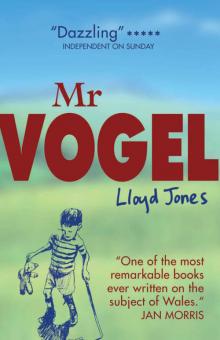 Mr Vogel
Mr Vogel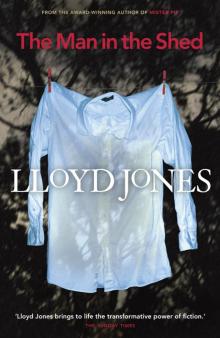 The Man in the Shed
The Man in the Shed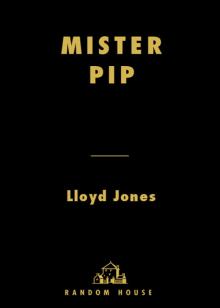 Mister Pip
Mister Pip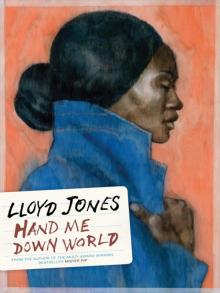 Hand Me Down World
Hand Me Down World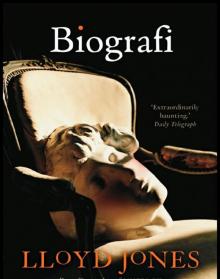 Biografi
Biografi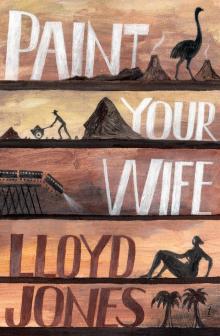 Paint Your Wife
Paint Your Wife Here at the End of the World We Learn to Dance
Here at the End of the World We Learn to Dance My First Colouring Book
My First Colouring Book Mr Cassini
Mr Cassini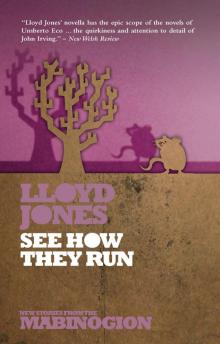 See How They Run
See How They Run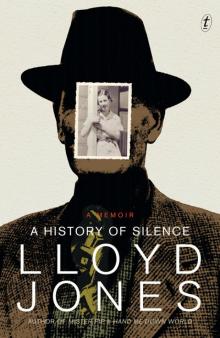 A History of Silence
A History of Silence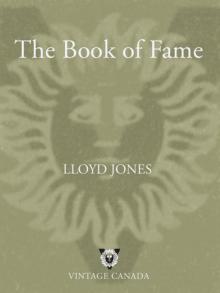 The Book of Fame
The Book of Fame